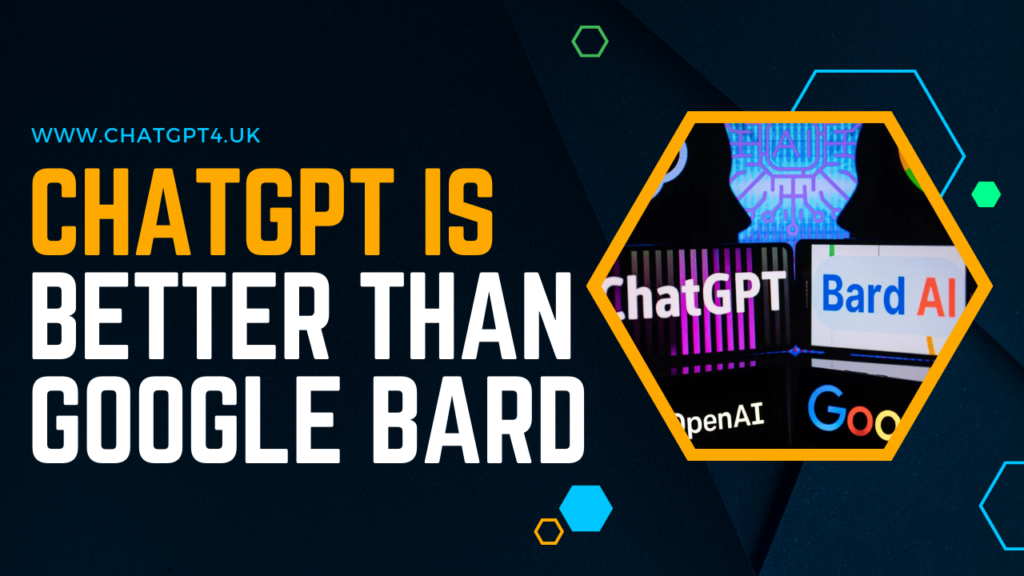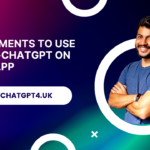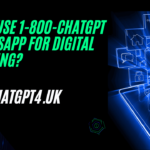5 Ways That ChatGPT Is Better Than Google Bard. Artificial intelligence has revolutionized the way we interact with technology, and language models have played a significant role in this transformation. Two prominent language models that have garnered attention are ChatGPT and Google Bard.
While both models are impressive, ChatGPT, powered by OpenAI’s GPT-3.5 architecture, offers several distinct advantages over Google Bard.
In this article, we will explore five ways that ChatGPT surpasses Google Bard, highlighting its superior capabilities and potential applications.
Natural Language Understanding:
ChatGPT exhibits exceptional natural language understanding, allowing it to comprehend and respond to a wide range of user inputs. Its advanced language processing capabilities enable it to decipher context, intent, and subtle nuances within a conversation.
This enhanced understanding ensures more accurate and relevant responses, creating a more engaging and productive user experience. By contrast, Google Bard’s natural language understanding may be limited, leading to potential misinterpretations and less precise responses.
Creative and Contextual Responses:
One of the remarkable features of ChatGPT is its ability to generate creative and contextual responses. By incorporating a vast amount of data from various sources, ChatGPT can generate unique and coherent answers, tailored to the user’s query.
This capacity opens the door to applications in content creation, brainstorming, and even storytelling. While Google Bard can generate text, its responses may be less imaginative and contextually coherent, restricting its utility in creative endeavors.
Knowledge Depth and Accuracy:
ChatGPT benefits from extensive training on diverse datasets, enabling it to possess a broad knowledge base across various domains. Its ability to retrieve accurate and up-to-date information is invaluable, especially when users require specific details or insights.
Whether it’s historical events, scientific concepts, or current affairs, ChatGPT can provide comprehensive and reliable information. On the other hand, Google Bard’s knowledge depth may be comparatively limited, potentially leading to incomplete or outdated responses.
Multilingual Support:
ChatGPT exhibits impressive multilingual capabilities, making it an invaluable tool for global users. It can understand and generate text in multiple languages, accommodating a diverse range of linguistic needs. This multilingual support opens doors for cross-cultural communication, translation services, and global collaboration.
While Google Bard may also offer multilingual support, ChatGPT’s proficiency in handling various languages gives it an edge in facilitating seamless interactions across linguistic boundaries.
Fine-Tuned Control and Customization:
ChatGPT offers users the ability to fine-tune and customize the model’s behavior to align with specific requirements. By providing prompts, instructions, and guidelines, users can influence the responses generated by ChatGPT, ensuring greater control over the output.
This level of customization enables applications in content moderation, sensitive topics, and personalized conversational experiences. While Google Bard allows some customization, ChatGPT’s flexibility and granularity give it a competitive advantage in tailoring responses to user preferences.
Enhanced User Interaction:
ChatGPT offers a more interactive and conversational experience compared to Google Bard. It can maintain context over extended conversations, remember previous queries, and provide coherent responses based on ongoing dialogue.
This dynamic interaction fosters a more engaging and natural conversation with the user, facilitating a seamless flow of information. In contrast, Google Bard may struggle to maintain context and may not offer the same level of interactivity, leading to a less immersive user experience.
Versatility Across Platforms:
ChatGPT is highly versatile and can be seamlessly integrated into various platforms and applications. Its API allows developers to leverage its capabilities and incorporate them into their own software or services.
This versatility enables ChatGPT to be utilized across a wide range of industries and uses cases, such as virtual assistants, chatbots, customer support systems, and more. Google Bard, while also offering API access, may not possess the same level of versatility, limiting its potential for integration into diverse applications.
Continual Model Improvements:
OpenAI consistently works on refining and enhancing ChatGPT through regular updates and model iterations. This commitment to improvement ensures that ChatGPT remains at the forefront of language modeling advancements.
With each update, ChatGPT becomes more sophisticated, addressing limitations and refining its capabilities. On the other hand, Google Bard’s development and updates may not occur as frequently, potentially resulting in a slower pace of improvement and adaptation to user needs.
Ethical Considerations and Bias Mitigation:
OpenAI has been proactive in addressing ethical considerations and bias mitigation in ChatGPT. They actively strive to minimize biases and ensure responsible use of the technology. OpenAI provides clear guidelines and prompts users to consider the ethical implications of their interactions.
This proactive approach helps mitigate the risks associated with biased or harmful outputs. While Google Bard also prioritizes ethical considerations, ChatGPT’s emphasis on responsible use sets it apart, ensuring a safer and more conscientious user experience.
Active Developer Community and Support:
ChatGPT has a vibrant developer community that actively contributes to its improvement and shares resources and insights. This community fosters collaboration, offers support, and provides valuable resources such as code libraries, tutorials, and best practices.
The collective knowledge and expertise of the developer community enhance the overall capabilities and usability of ChatGPT. Google Bard may have its own community, but ChatGPT’s developer community is known for its engagement and active involvement in enhancing the model.
Conclusion:
ChatGPT, powered by OpenAI’s GPT-3.5 architecture, presents several distinct advantages over Google Bard. Its superior natural language understanding, creative and contextual responses, extensive knowledge base, multilingual support, and fine-tuned control make it an exceptional language model.
While both models have their merits, ChatGPT’s advanced capabilities position it as a valuable tool for diverse applications, ranging from content creation to customer service. As language models continue to evolve, it is evident that ChatGPT’s unique features contribute to a more immersive and productive user experience, surpassing the capabilities of Google Bard.
FAQs
What is ChatGPT?
ChatGPT is a language model developed by OpenAI, powered by the GPT-3.5 architecture. It utilizes artificial intelligence to understand and generate human-like text responses. It has been trained on a vast amount of data from diverse sources, enabling it to comprehend and generate contextually relevant and accurate responses.
What is Google Bard?
Google Bard is another language model developed by Google. It aims to generate human-like text responses and provide conversational interactions. While both ChatGPT and Google Bard share similarities in their objectives, they differ in terms of their capabilities and features.
How does ChatGPT surpass Google Bard?
ChatGPT offers several advantages over Google Bard. It exhibits superior natural language understanding, generates creative and contextual responses, possesses an extensive knowledge base, supports multiple languages, and allows for fine-tuned control and customization. These factors contribute to a more engaging and versatile user experience.
Can ChatGPT understand and respond in multiple languages?
Yes, ChatGPT demonstrates impressive multilingual support. It can understand and generate text in various languages, catering to the linguistic needs of global users. This feature facilitates cross-cultural communication, translation services, and collaboration across language barriers.
How does ChatGPT ensure accuracy and up-to-date information?
ChatGPT has been trained on a vast range of datasets, enabling it to possess a broad knowledge base. It can retrieve accurate and up-to-date information from reliable sources. However, it’s important to note that, like any AI system, ChatGPT’s responses are generated based on patterns in the training data and may not always reflect the most current information.
Can users customize the behavior of ChatGPT?
Yes, ChatGPT allows users to fine-tune and customize its behavior to align with specific requirements. Users can provide prompts, instructions, or guidelines to influence the responses generated by ChatGPT. This customization offers greater control over the output, making it suitable for applications such as content moderation, personalized conversational experiences, and more.
How often is ChatGPT updated?
OpenAI is dedicated to improving ChatGPT continually. They regularly release updates and iterations to enhance the model’s capabilities, address limitations, and incorporate user feedback. These updates ensure that ChatGPT remains at the forefront of language modeling advancements.
Does ChatGPT prioritize ethical considerations and bias mitigation?
Yes, OpenAI places a strong emphasis on ethical considerations and bias mitigation in ChatGPT. They provide clear guidelines to users, prompting them to consider the ethical implications of their interactions. OpenAI actively works to minimize biases and ensures responsible use of the technology to mitigate potential risks associated with biased or harmful outputs.
Is there a developer community for ChatGPT?
Yes, ChatGPT has an active developer community that actively contributes to its improvement and offers support to fellow developers. This community fosters collaboration and knowledge sharing, providing resources such as code libraries, tutorials, and best practices. The developer community plays a vital role in enhancing the overall capabilities and usability of ChatGPT.
What are the potential applications of ChatGPT?
ChatGPT has a wide range of applications, including content creation, virtual assistants, chatbots, customer support systems, translation services, and more. Its versatility and advanced language processing capabilities make it a valuable tool for industries across domains, facilitating enhanced user experiences and productivity.







